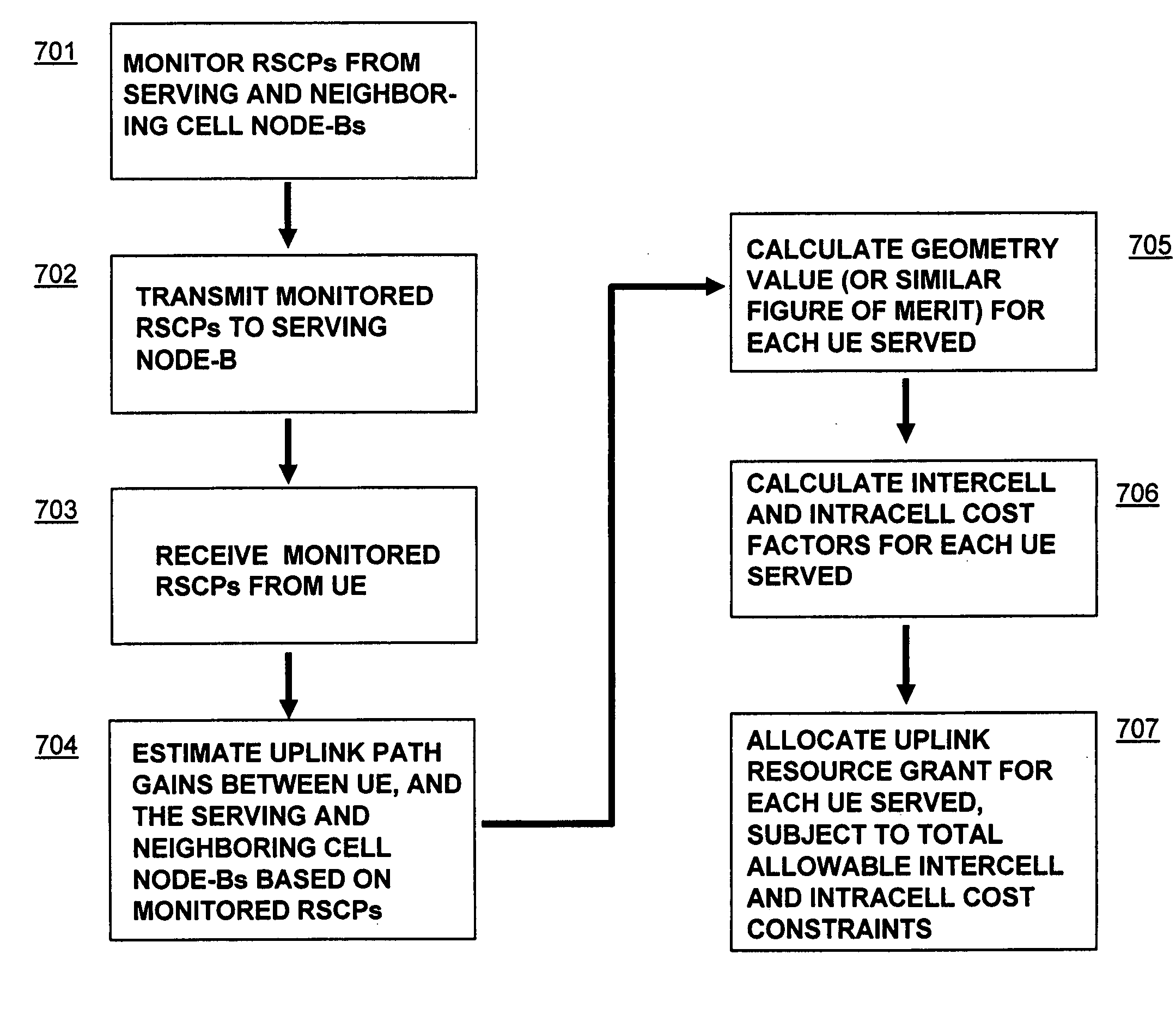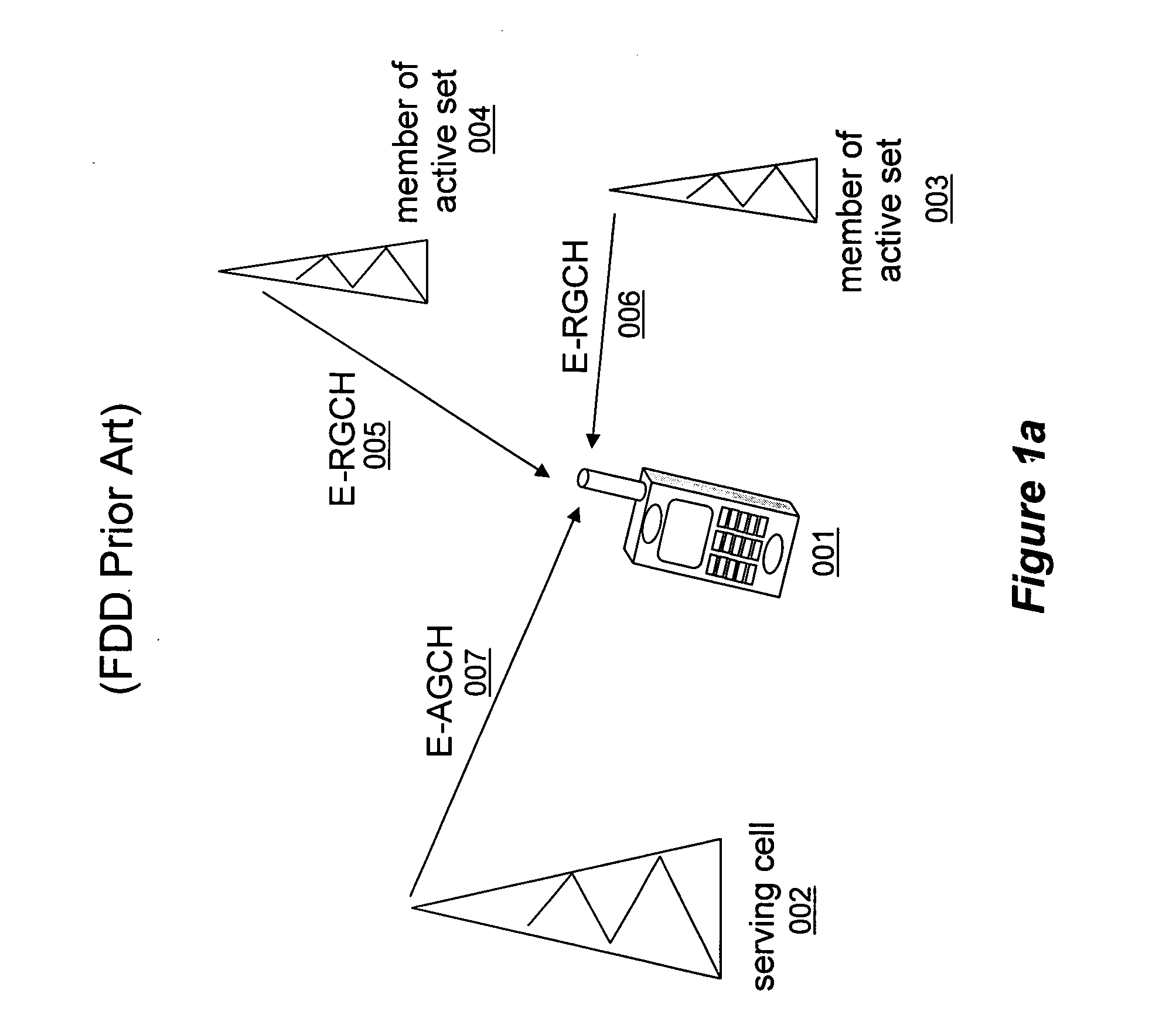Uplink resource allocation to control intercell interference in a wireless communication system
a wireless communication system and resource allocation technology, applied in the direction of assessing restriction, power management, receiving monitoring, etc., can solve the problems of increasing interference level at the base station, degree of co-ordination, and interference degree, so as to avoid major increases in the complexity of ue receivers
- Summary
- Abstract
- Description
- Claims
- Application Information
AI Technical Summary
Benefits of technology
Problems solved by technology
Method used
Image
Examples
Embodiment Construction
[0038] Unless defined otherwise, all technical and scientific terms used herein have the same meaning as is commonly understood by one of ordinary skill in the art to which this invention belongs. All patents, applications, published applications and other publications referred to herein are incorporated by reference in their entirety. If a definition set forth in this section is contrary to or otherwise inconsistent with a definition set forth in applications, published applications and other publications that are herein incorporated by reference, the definition set forth in this section prevails over the definition that is incorporated herein by reference.
[0039] As used herein, “a” or “an” means “at least one” or “one or more.”
[0040] In reference to FIGS. 2a and 2b, a UE 201 is in communication with its serving Node-B (base station) 202. The uplink signal also arrives at neighboring cell Node-Bs 203 and 204. There exists a signal path gain between each UE (denoted “i”) and each N...
PUM
 Login to View More
Login to View More Abstract
Description
Claims
Application Information
 Login to View More
Login to View More - R&D
- Intellectual Property
- Life Sciences
- Materials
- Tech Scout
- Unparalleled Data Quality
- Higher Quality Content
- 60% Fewer Hallucinations
Browse by: Latest US Patents, China's latest patents, Technical Efficacy Thesaurus, Application Domain, Technology Topic, Popular Technical Reports.
© 2025 PatSnap. All rights reserved.Legal|Privacy policy|Modern Slavery Act Transparency Statement|Sitemap|About US| Contact US: help@patsnap.com



